Merging in Mercurial always work the following way:
- Update to one of the branches (see notes below for why you want to pick one or the other and not just pick a random branch)
- Merge with the other branch
For instance, in your case, you would do:
hg update trunk
hg merge experiment
Choosing the right branch to update to
There are some things to consider when picking which branch to update to, and which to merge from, and it has to do with bookmarks and branch names.
Take branch names first. If you first update to the trunk branch, then merge with experiment, the merge changeset will be on the trunk branch.
However, if you update to the experiment branch, merge with trunk, then the merge changeset will be on the experiment branch.
This is important to consider when thinking about why you're merging. Are you merging the experiment into trunk, or are you updating the experiment with other changes having occured on trunk.
As for bookmarks, with newer versions of Mercurial, bookmarks are an integral part, and if you update to a bookmark, say like this:
hg update moving-target
and then commit, that bookmark will follow your commit, ie. it will move forward.
In line of this, if you have a bookmark called moving-target on the head of the trunk branch, and update to that bookmark, the merge changeset, when you commit it, will move that bookmark forward.

